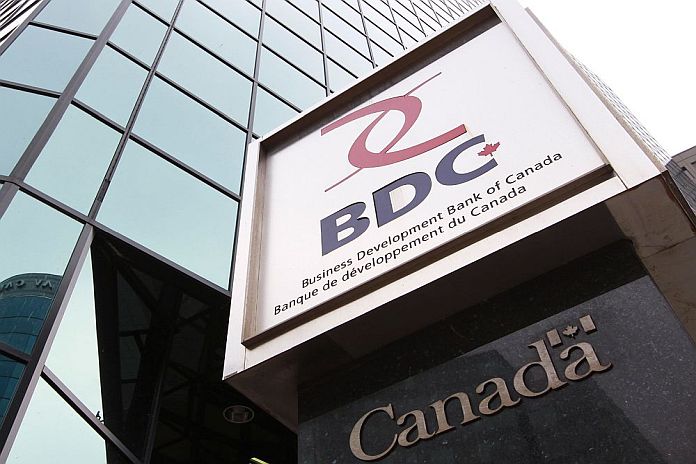What do Canadian consumers have in store for entrepreneurs in 2024?

By BDC
MONTREAL, Canada – Consumer spending is the engine of Canada’s economic growth, accounting for some 60 percent of GDP. As consumers increasingly cut back on spending in response to inflation and high-interest rates, a growing number of companies are worried about slowing sales in the coming months. This edition of the economic letter looks at the state of consumer spending in Canada, what to expect from consumers in the coming months, and above all, how companies can capitalize on emerging trends to grow their sales.
Worried consumers pull back on spending
During an economic slowdown, workers tend to spend less and save more for fear they may be laid off. We see this phenomenon playing out in Canada. While household savings are down from their peak in 2020, they remain significantly higher than before the pandemic.
During the pandemic it was difficult to spend on many discretionary items, but today Canadians are cutting back by choice to build up a savings cushion. Nearly two-thirds of consumers say they have reduced their spending because of interest rate expectations, and more than six out of ten because of inflation.
As a result, 39% of Canadian companies have seen their sales decline over the past year, according to a survey by the Bank of Canada. Sales have been particularly hard hit for items where substitutes are available or that are debt-financed. A slowdown in demand has also been felt more acutely in the clothing, footwear and accessories industry.
Elsewhere, stores linked to home renovation and furnishings are suffering from weakness in the residential market brought on by high-interest rates.
While the slowdown is impacting many industries, a rebound in retail sales that began in October is providing hope for a better year in 2024.
Will the resilience of late 2023 last?
According to the Bank of Canada’s survey of consumer expectations, consumption is set to slow further, especially early in the year. Canadians plan to reduce their spending even more, particularly on big-ticket items. They also say they’re more likely to shop around for bargains to meet their basic needs.
However, there is evidence that consumers have adjusted to higher interest rates and are encouraged by hopes that the rate hiking cycle is over and cuts are coming. The Bank of Canada remains coy about when it will finally decide to lower its key interest rate, but we continue to believe that consumers will benefit from lower interest rates over the second half of the year. An easing of credit conditions has actually already started as effective rates started to go down.
Given the high level of savings in the country, Canadians have the liquidity they need to support the economy once they are convinced rate hikes are a thing of the past. However, businesses may still take longer to recover their sales levels as interest rates will remain in restrictive territory. As well, inflation will continue to hurt certain sectors more than others, namely shelter and food retailers.
On the other hand, strong population growth will support spending, particularly expenditures tied to housing. Thus, the residential market (and related sectors) could rebound rapidly. According to the Bank of Canada, almost 40% of newcomers plan to buy a home within the next year.
How can your company adapt to the current environment?
Whether your company does business with other companies (B2B) or directly with the consumer (B2C), the slowdown in consumer demand will have an impact on your sales. However, capitalizing on emerging consumer trends could help your company stand out from the crowd.
- It can be very useful to take a generational approach to understanding your customers. Each generation has different needs and expectations. Assessing the characteristics of the generations your company serves will help you to better meet their needs, increase your relevance to them and enhance your competitiveness.
- Focus on delivering a complete customer experience. The vast majority of consumers (over 90%) agree that an easy, satisfying experience from the moment of purchase through to ownership and use of the product is fundamental to a good relationship with a company.
- Gaining a better understanding of your customers will allow you identify what’s most important to them when making a purchase. Are your customers more likely to be on the lookout for deals because they’re on a tight budget? Or will they spend on products that are aligned with their values, such as a concern about the environment?
- Today, more than ever, consumers want companies to act as model corporate citizens. Diversity and inclusion, greenhouse gas reduction, ethical and transparent business practices have become an integral part of the business landscape and are likely to remain so over time. Canadian SMEs should seize the opportunity to appeal to new generations of customers by improving their business practices.
Read this report for more details on the best strategies for capitalizing on these trends.
In a nutshell…
Consumption will remain sluggish well into 2024. Sales at many companies are likely to slow, but strong population growth should help moderate the trend. Consumers have enough liquidity to ensure their spending picks up pace in the second half of the year when rates cuts should begin.
Stimulating sales growth in the current economic climate isn’t easy, but companies can still capitalize on emerging trends specific to their customer base to sustain their businesses until the economy picks up again.
Source: caribbeannewsglobal.com

